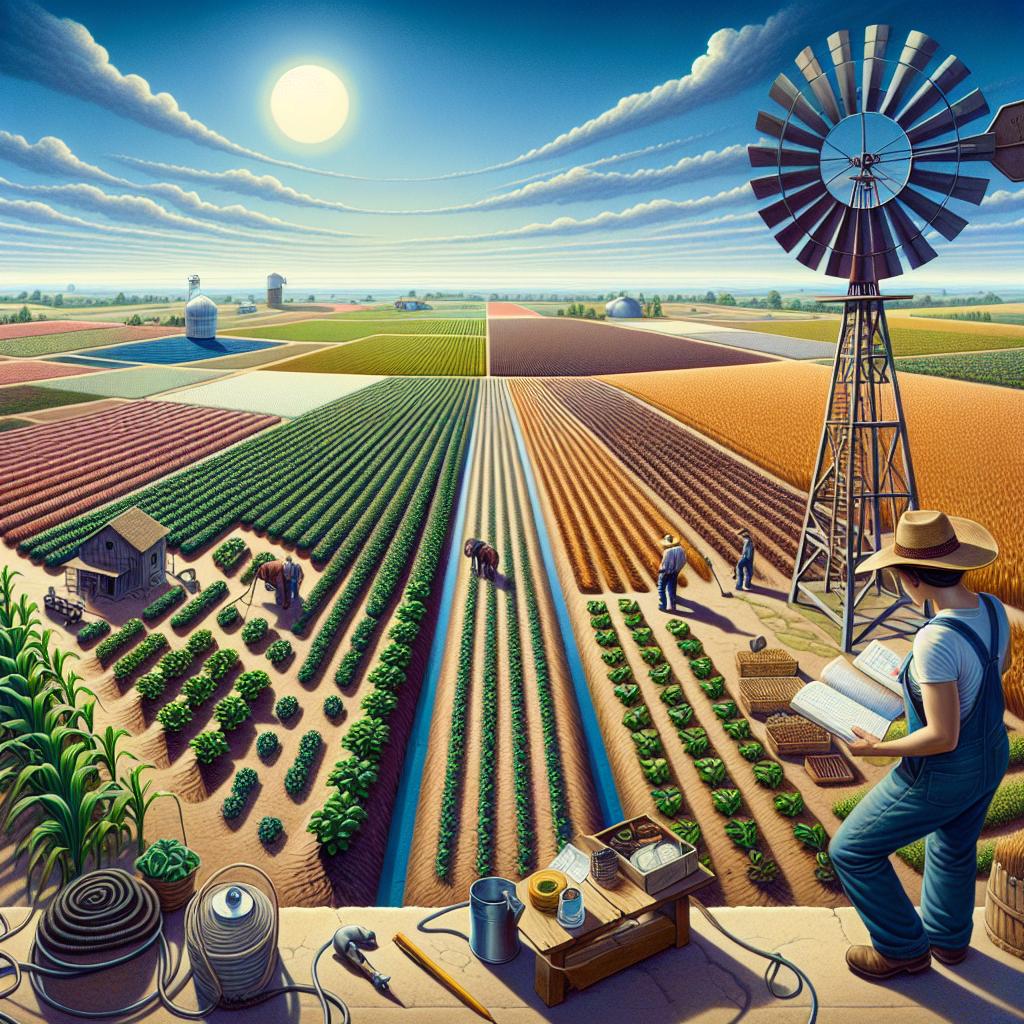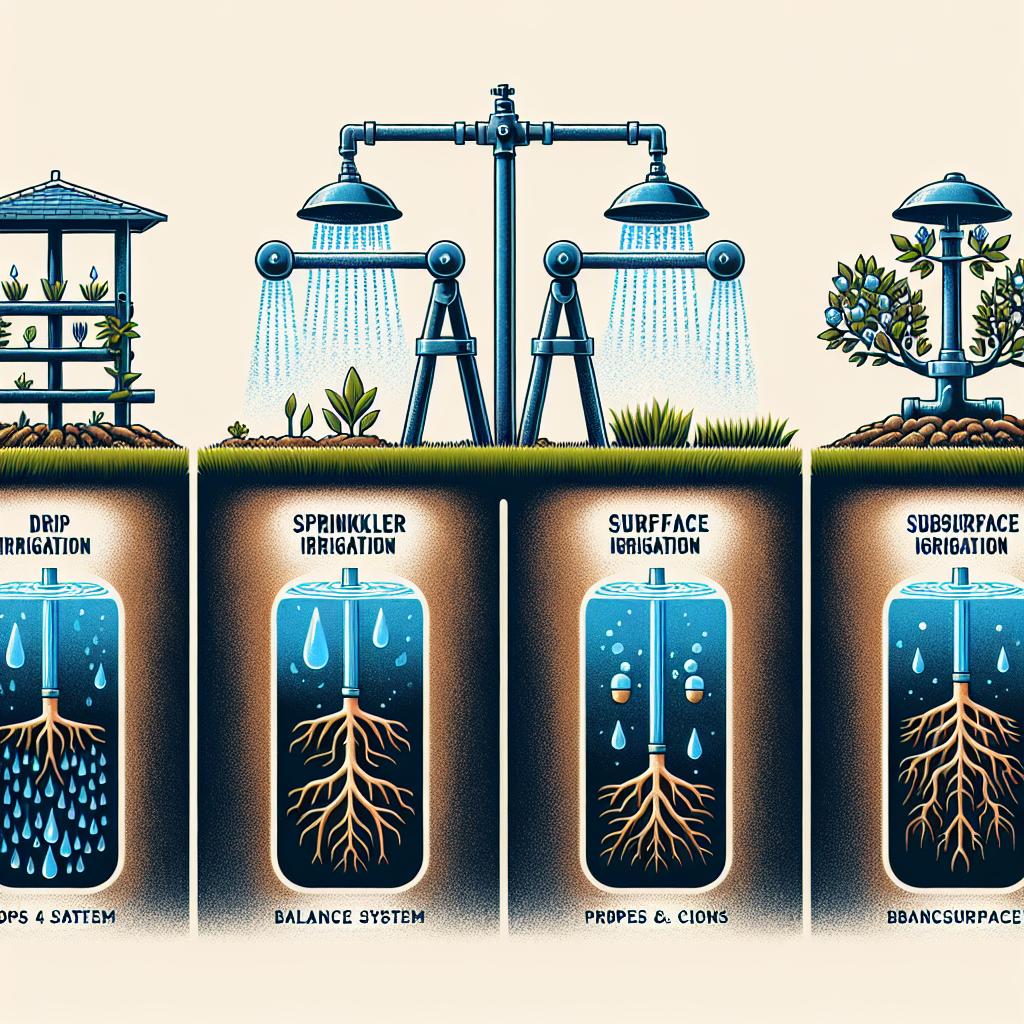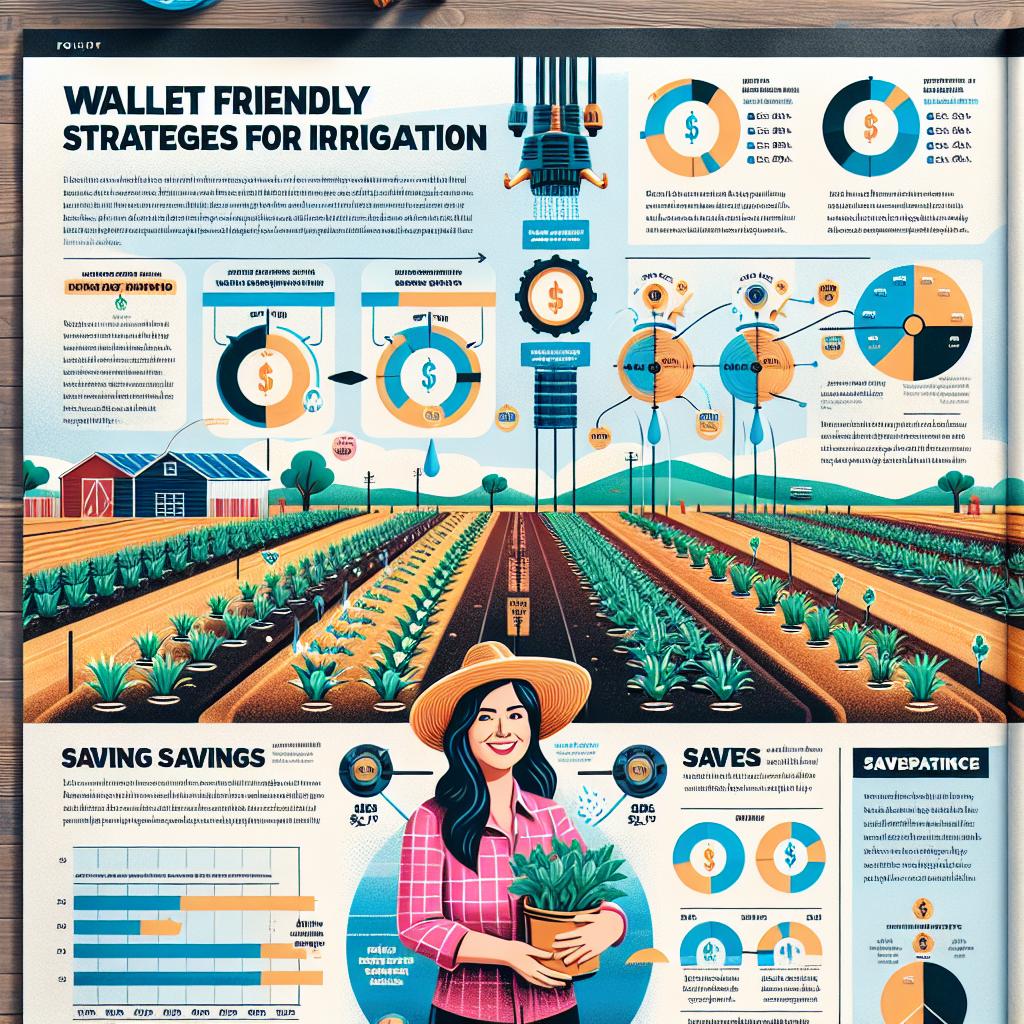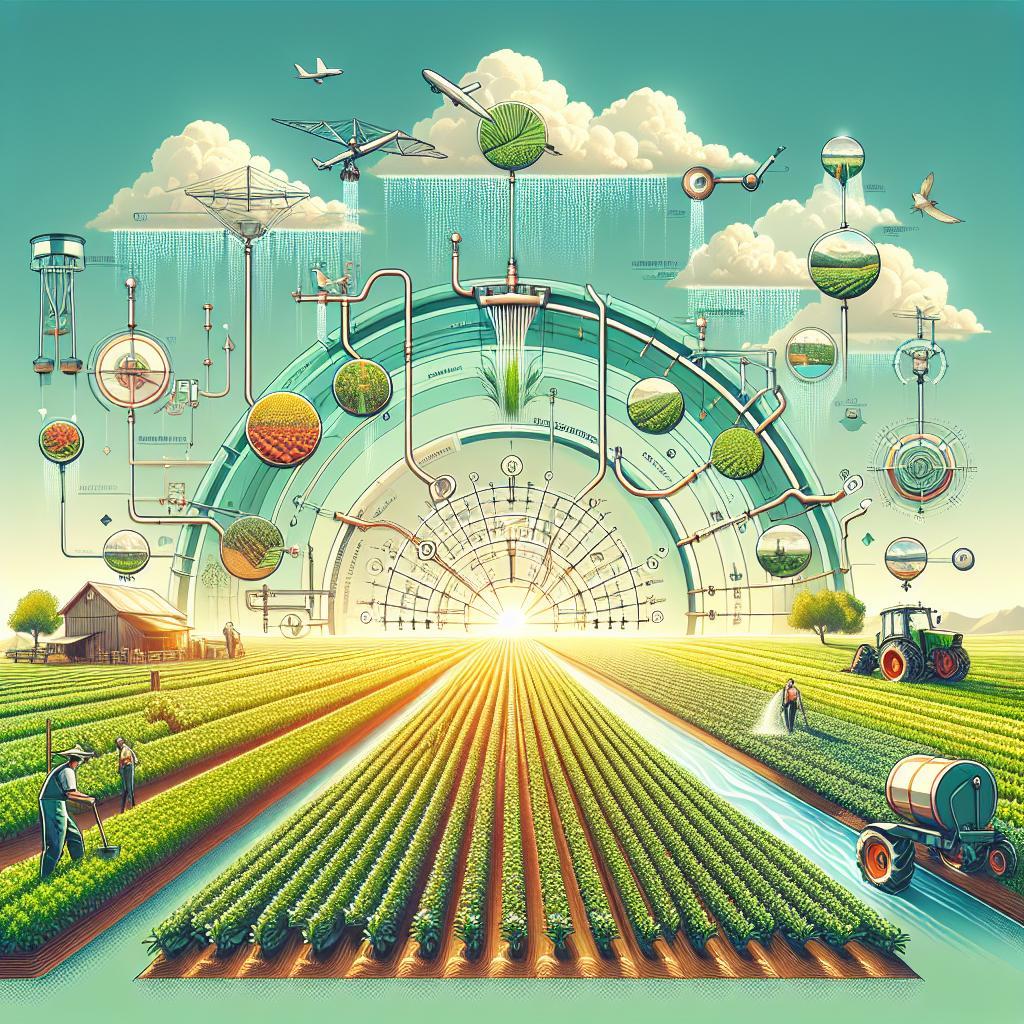This post may contain affiliate links which means I may receive a commission for purchases made through links. Learn more on my Private Policy page.
Finding the Perfect Fit: Expert Advice on Selecting the Best Irrigation System for Your Farm
In the lush tapestry of agriculture, where the sun meets the soil and diligent hands nurture the earth, irrigation is the lifeblood that sustains our crops. From sprawling fields of golden wheat to verdant orchards bursting with fruit, every farmer knows that the right irrigation system can make all the difference between a bountiful harvest and a disappointing one. Yet with a myriad of options available, how do you navigate this vital decision? Fear not, dear farmer! In this article, we’ll dive into expert advice tailored just for you, helping you wade through the waves of information to find the perfect irrigation solution for your unique needs. Whether you’re a seasoned pro or just starting your farming journey, our friendly guide will illuminate the path ahead, ensuring that every drop counts as you cultivate your dream farm. Let’s dig in!
Understanding Your Farms Unique Needs for Irrigation
Every farm has its distinct characteristics that determine its specific irrigation needs. Understanding these unique requirements starts with assessing soil type, climate conditions, and the crops being cultivated. For instance, sandy soils may drain faster and require more frequent watering, while clay soils retain moisture longer but may need less frequent application. Additionally, the local climate, including average rainfall and temperature patterns, significantly influences irrigation decisions. By meticulously evaluating these factors, farmers can identify the most suitable irrigation systems, whether it’s drip irrigation for water-intensive crops or sprinkler systems for larger fields.
Another essential aspect is to consider your farm’s layout and water availability. Factors such as slope, field size, and proximity to water sources can dictate the practicality of certain irrigation methods. A well-planned irrigation system can optimize water usage while minimizing runoff and evaporation losses. To facilitate your decision-making process, here’s a simple table to help compare popular irrigation options:
| Irrigation Type | Best For | Water Efficiency |
|---|---|---|
| Drip Irrigation | Vegetables, Orchard Crops | High |
| Sprinkler Systems | Grains, Lawns | Medium |
| Flood Irrigation | Rice, Wetland Crops | Low |

Exploring the Types of Irrigation Systems: Pros and Cons
When reviewing various irrigation systems, it’s essential to weigh their strengths and weaknesses to determine the best fit for your farm’s unique needs. Drip irrigation is celebrated for its efficiency, delivering water directly to the plant roots, thereby reducing water waste. However, it can be costly to install and may require regular maintenance and monitoring to prevent clogging. Alternatively, sprinkler systems offer flexibility and are suitable for diverse crops, but they can lead to evaporation losses and uneven water distribution during windy conditions.
A more traditional method, flood irrigation, involves saturating the field, which can be inexpensive and simple to implement. Nevertheless, it often results in waterlogging and soil erosion if not managed diligently. Subsurface irrigation provides a solution for deep-rooted crops by delivering moisture below the surface, dramatically minimizing evaporation. Yet, the upfront investment is significant, and the system requires expertise to install properly. To simplify your decision-making, here’s a comparison table of different irrigation methods:
| Irrigation Type | Pros | Cons |
|---|---|---|
| Drip Irrigation |
|
|
| Sprinkler Systems |
|
|
| Flood Irrigation |
|
|
| Subsurface Irrigation |
|
|

Maximizing Efficiency: Tips for Choosing the Right System
When selecting an irrigation system, it’s essential to assess your specific farm needs and understand the variety of options available. Start by evaluating the size of your farm and the types of crops you cultivate. Different systems cater to different scales and crop types—what works for a small vegetable garden may not suffice for a large fruit orchard. Additionally, consider factors such as water source availability, soil type, and climate conditions. This holistic view will help you narrow down choices effectively.
Next, think about sustainability and maintenance. Choosing a system that minimizes water waste while maximizing coverage can significantly cut down costs in the long run. Look for systems that offer automated controls and smart technology to optimize water usage. Here are some key factors to consider:
- Energy efficiency: Opt for solar-powered pumps or drip systems.
- Labor requirements: Systems that require less manual adjustment can save time.
- Cost of installation vs. long-term savings: Balance initial investment with expected efficiency gains.

Budgeting for Success: Finding Cost-Effective Solutions for Your Irrigation Needs
One of the most effective ways to manage your irrigation budget is to assess your specific needs before selecting a system. Consider your crop type, soil condition, and local climate to determine the best fit. This will not only save you money but also optimize your water usage. Additionally, explore the following cost-effective strategies to ensure you get the maximum value from your investment:
- Research Grants and Subsidies: Many agricultural organizations offer financial assistance for sustainable irrigation practices.
- Opt for Drip Irrigation: This method delivers water directly to the plant roots, greatly improving efficiency and reducing wastage.
- Regular Maintenance: Keep your systems well-maintained to avoid costly repairs and inefficiencies.
- Monitor Water Usage: Utilize smart technology to track your water use and make adjustments as necessary.
Another way to stretch your irrigation budget is to invest in systems that provide long-term savings even if the initial cost is higher. For example, high-efficiency sprinklers or automated irrigation systems can drastically reduce water bills over time. Consider the following benefits of investing upfront:
| Invest in | Benefits |
|---|---|
| High-Efficiency Sprinklers | Reduce water runoff and increase distribution uniformity. |
| Soil Moisture Sensors | Optimize irrigation schedules based on actual soil conditions. |
| Rainwater Harvesting Systems | Utilize free water and lower dependency on municipal sources. |
The Conclusion
As we close the chapter on our exploration of the best irrigation systems for your farm, we hope you feel empowered and inspired to make a choice that not only quenches the thirst of your crops but also nurtures the land you hold dear. Selecting the right system is more than just a decision—it’s a commitment to sustainable farming practices and a promise to your future harvests.
Remember, every farm is unique, and what works for one might not work for another. Whether you lean towards drip, sprinkler, or even furrow irrigation, take the time to assess your specific needs, soil types, and crop requirements. Trust your instincts, listen to the insights shared by experts, and don’t hesitate to ask questions along the way.
As you embark on this journey of growth and cultivation, may your fields flourish and your yields be bountiful. Here’s to planting not just seeds, but also dreams for a brighter, more sustainable agricultural future. Happy farming, and may your irrigation system serve you well for seasons to come! 🌱✨
This post may contain affiliate links which means I may receive a commission for purchases made through links. Learn more on my Private Policy page.

